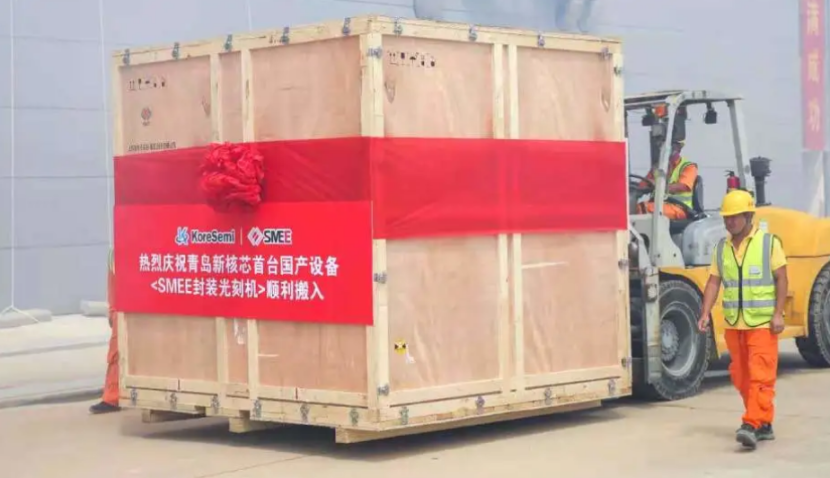Global and China Automotive Microcontroller Unit (MCU) Market Report 2021: Chinese Vendors Pursue Replacement of Foreign Peers in the Context of Shortage of Chips"
Automotive MCU Research: Chinese vendors pursue replacement of foreign peers in the context of "shortage of chips". Concentrated capacity and repeated outbreaks of the COVID-19 make it hard to relieve the shortage of MCUs at once.
MCU, a core chip for vehicle control, finds application in body control, driving control, infotainment and driving assistance. MCU is a mature market featuring a stable pattern. NXP, Infineon, Renesas, STMicroelectronics and Texas Instruments have long been the top five players in the global automotive MCU market where CR7 (hold by international giants) reached over 95% in 2020.
Automotive MCUs with multiple specifications are often produced with 40/45/65nm process, and the operating cost of production lines remains high. So most integrated device manufacturers (IDM) like NXP, Renesas, Infineon, Texas Instruments and Microchip Technology adopt the foundry strategy. Automotive MCU foundry is a highly concentrated industry. Globally, 70% of automotive MCUs are produced by TSMC. Yet MCU capacity makes up a mere 3% of TSMC's total capacity.
As the pandemic in 2020 led to a slump in the demand from automotive industry, MCU vendors reduced their orders and digested their inventory. In 2021, the recovery of global automotive industry has caused a short-term short supply of automotive chips that need a long time to supply.
Since 2021Q2, Malaysia and Taiwan have underwent a much severer COVID-19 outbreak. Taiwan-based TSMC is a major MCU fab; Malaysia is home to OSAT companies of vendors such as NXP, Renesas and Infineon. As a result, automotive MCU industry may be hit hard again, taking a bigger toll on chip supply.
At present, most vehicle and component production suspensions are a result of the shortage of MCUs which are largely demanded by automakers. It is predicted that the lack of chips will last across 2021 but may be eased from 2022 for the following reasons.
(1) Suppliers and fabs race to expand their capacity. For example, Infineon will construct and put into use a new 12-inch fab in late 2021; in 2021, TSMC will produce MCUs 60% more than in 2020, and concentrate on the expansion of its Nanjing plant (28nm) for larger MCU capacity.
(2) Chinese companies are working to make deployments in MCU. They are expected to start mass production in 2022 to replace foreign products and mitigate the short supply of chips. An example is GigaDevice which plans to spawn its latest automotive MCU products in 2021.
In the long run, as vehicles tend to be intelligent, connected and electrified, the shortage of chips will become normal. The basic solution to the supply safety in China's intelligent connected vehicle industry chain is to build an independent chip industry chain.
The short supply of chips will bring the window of opportunity to Chinese MCU industry.
Through the lens of supply chain, MCU ecosystem covers a lot including a variety of software, hardware, development tools, and open source platforms used by end customers. China currently still depends heavily on foreign software and tools.
International manufacturers are in dire need of MCUs amid the short supply of chips. Automakers have begun to add purchase channels and candidate suppliers, which brings the window of opportunity to Chinese MCU vendors.
In China, few companies such as AutoChips, ChipON, Sine Microelectronics, Chipways, BYD and NationalChip can produce MCUs in quantities, among which BYD, Sine Microelectronics, ChipON and AutoChips can support OEMs, but their products are still used for controlling simple functions like windows, lighting and cooling system and rarely seen in power control, intelligent cockpit and ADAS, among other complex applications.
MCU is a platform-based product. With abundant product lines, overseas vendors provide full range of products for customers. At present, Chinese vendors are working to deploying MCU product lines of all series.
Chinese MCU vendors may make breakthroughs in the following two aspects:
Body control: MCU solutions for vehicle wireless charging, ambient light control and flowing water blinker rear light control, which were once available to high-class models, have now been largely used in low- and mid-class vehicles, and the demand will surge.
For example, Sine Microelectronics has rolled out MCUs for vehicle wireless charging and flowing water blinker rear light control, of which ASM87F0812T16CIT, a MCU master chip designed for vehicle LED flowing water blinker rear light has been shipped more than 1.5 million pieces as of January 2021.
Power control: Chinese vendors have begun to introduce related products, but there are still no heavyweight products. Players that have products landed have more potential to replace foreign counterparts.
In May 2021, ChipON launched KF32A156, a new automotive MCU subject to AEC-Q100 standard and using kernel processor. KF32A156 is applicable to power supply, motor control and so on. With wider power domains than the previous products, the mass-produced MCU will be available to 70% body and power control unit modules compared with the previous 30%.
Building an independent industry chain is of vital importance in addition to improving layout of product lines. Coordinating the upstream and downstream resources of the industry chain from IP and chip design to foundry and OSAT helps to make homemade automotive MCUs safer, more stable and more reliable.


